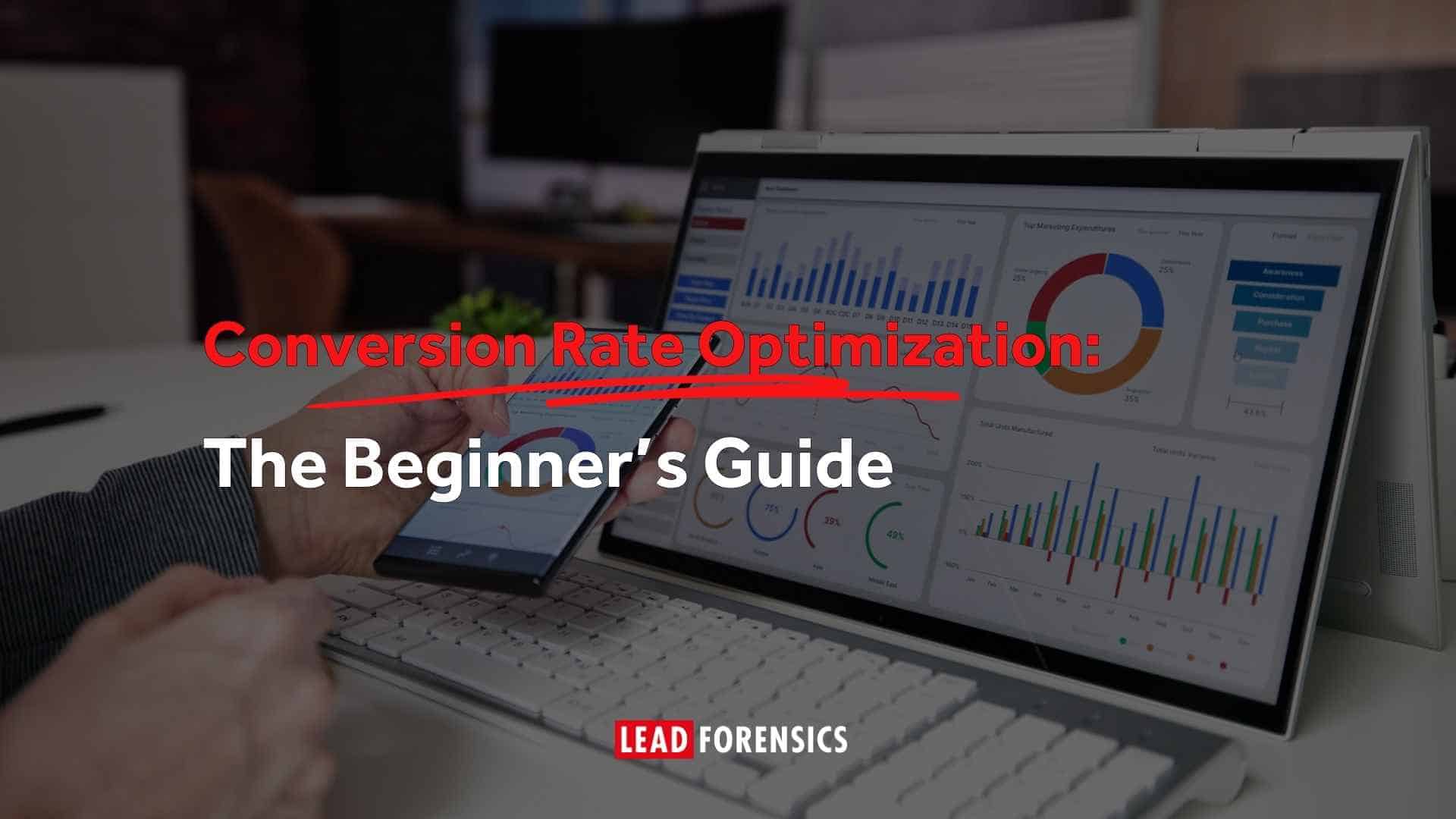Demand generation is an essential part of inbound marketing – instead of chasing after leads, you lay the groundwork, sit back and let the leads come to you…
Well, maybe in an ideal world – in reality there’s plenty of preparation, nurturing, analysing, reporting and refining involved. But you’ll be pleased to hear demand generation produces more and higher quality leads – in fact, inbound practices produce 54% more leads than traditional outbound marketing tactics.
Instead of cold calling and telling them they have a problem and your product is the solution, you’re creating helpful content that helps them arrive at that conclusion by themself, so they’ll be much more enthusiastic about working with you and more likely to convert.
The difference between demand generation and lead generation?
Demand generation and lead generation are often used interchangeably by marketers. And, while they are similar processes – both with an aim to generate leads for your business – there are some key differences.
Demand generation puts your target audience in contact with your brand. It drums up an interest in what you offer and creates a demand for your product.
Lead generation brings you new business opportunities. And, it enables direct sales contact and a chance to gain new clients. Without demand generation, business lead generation cannot exist.
Where demand generation strives to build brand awareness and authority so potential customers reliably enter the purchase track, a lead generation strategy focuses on turning an engaged audience into leads via direct outreach.
Demand generation is often overlooked, but is in fact a crucial part of your wider business strategy. From helping position you as an expert with thought-leading content and skyrocketing your reputation, to building your audience’s trust with heightened brand awareness. Without demand for your product, where do leads come from?
Demand generation can take the form of anything that raises the profile of your brand and brings it to people’s attention, such as:
- Email marketing
- Brand messaging
- Inbound marketing
- Content marketing
- Marketing automation
- Social media marketing
- Partnering up with influencers
- Pay-per-click advertising (PPC)
- Account-based marketing (ABM)
- Educational activities, e.g. webinars
- Creating free tools such as calculators or templates
- Activities for building awareness, e.g. an online summit
- Creating shareable pieces of content, e.g. infographics, white papers, etc.
But what are the best demand generation strategies that will ultimately lead to a good ROI and bring quality leads into your business? Let’s look at some tips!
Create valuable content
When it comes to demand generation, content is your secret weapon. Don’t write content just for the purpose of plugging your product – create content that is genuinely valuable to your target audience. This creates a sense of trust between the reader and your brand, which means they’re more likely to come back to your website.
It will also reflect well on your brand – so much so that enthusiastic prospects may take things one step further and advocate for your brand on your behalf, becoming the elusive “brand ambassadors” companies are always talking about.
Lastly, by offering something of real value, your visitors are much more likely to part with whatever information you need to begin qualifying them as a viable lead, the first stage in the demand generation process.
Consider Implementing a Lead Scoring System
Demand generation isn’t just about increasing the quantity of leads for your brand, but also raising the quality of those leads. Lead scoring is one of the best ways to ascertain whether your leads are of the quality your sales team needs to close more deals.
Lead scoring evaluates the historical behavior of your prospects and the actions they’ve taken while interacting with your brand to determine whether the individual prospect demonstrates sufficient interest to be considered a “hot” lead for your sales team.
This is accomplished by examining the actions taken at various touchpoints with your brand, such as whether they viewed a specific page on your site that suggests purchase intent, whether they’ve expressed interest in a demonstration of your product or used your free tools, or the stage at which the prospect happens to be in the funnel (such as discovery vs. consideration).
Lead scoring can also evaluate the strength of the lead by assessing the individual’s role in an organization, such as their level of decision-making responsibility and seniority in the company.
However, while lead scoring can be tempting, it may not necessarily be right for your brand. For example, if you’re struggling to generate enough leads for your sales team in the first place, it’s probably a little premature to be worrying about scoring the leads you do have.
However, for brands hoping to take their demand generation strategies to the next level, lead scoring may be worth considering.
Always be front-of-mind
Give your audience plenty of ways to discover and engage with your product. 72% of buyers prefer to engage with a brand through multiple channels. So, explore all the options available to your team. Use social media, run PPC campaigns, maximize content with SEO and attend events. Help people keep discovering you until they become a client!
Have a consistent, unique brand identity
You need to stand out! Especially if you are in a competitive market. Think of three defining traits your brand personality exudes. Then, use them to help your marketing be totally individual.
The best demand generation is diverse in nature, featuring different formats and establishing different customer touch points. However, consistency is key to making each element in your efforts part of a unified, positive experience.
Keep your branding, voice, style, and messaging consistent across every customer touch point. Make sure each piece of content you produce demonstrates your brand values. More importantly, they should also be immediately recognizable as your brand.
If it doesn’t, revise, revise, revise until your brand voice is crystal clear. Remember, the wrong messaging doesn’t just turn off customers, it also impacts brand reputation
Remember your reputation
When someone discovers your brand for the first time, they will soon discover your reputation. Carefully construct a PR strategy to help you ensure your reputation is positive! You want to maintain a world-class image and boost the demand for your services.
PR goes far beyond the crisis communications, press releases, and other talking points often associated with it. Using the principles behind PR tactics in your demand gen strategy can make a huge difference in its success.
Work closely with sales
Today’s sales and marketing teams need each other to give customers the best possible experience—and of course, develop a replicable process for closing deals, increasing deal size, and speeding up the sales cycle.
The goal of demand generation marketing is to give sales the content they need to speak intelligently on any product, service, or segment and close more deals.
It’s important to integrate your sales and marketing programs to maximize knowledge sharing. The sales team can benefit from understanding which type of content resonated with a prospect.
And the marketing team can benefit from lead scoring data to understand which digital marketing channels perform the best. Is it PPC vs SEO, email marketing, or a combination?
Guide your potential customers to the sales team using strong, visually distinct calls to action (CTAs) that are tailored to each persona. After the prospect enters their information and is deemed a qualified lead, the sales team takes over. From there they can guide them through the remainder of the sales process.
Find your ICP
Spend some time figuring out your ideal customer persona (ICP) and do your research into their pain points, how best to appeal to them, and any barriers there might be to reaching them. This will help you establish the audience you want to reach, and having a persona in mind will help you to write content that speaks to them. By focusing on boosting demand, you will improve the quality of your leads and see better ROI!
Be buyer-centric
Put your audience first in every campaign – finding your ICP will be a huge help in this. Find out why your customers use your product. Ask unconverted leads why they didn’t make the purchase. Find out how your product affects their daily business needs or ask unconverted leads to get in touch about why they didn’t follow through with a purchase. This will give your team some food for thought.
Use webinars to help with demand generation
If webinars are going to be a part of your demand generation strategy, use it as an opportunity to partner with the superstars of your industry on webinars. Doing so will increase your standing in your industry, forge valuable connections with key influencers, and boost your brand awareness – all crucial elements of an ongoing demand generation strategy.
Of course, partnering with industry rock stars isn’t as easy as simply emailing the big names and asking them to join your next webinar.
Establishing relationships takes time and effort, and initially, it might not be possible to snag the speakers you want. However, when planning and producing webinars, you should strive to feature the most respected, well-known guests you can – just try not to get too starstruck!
Understand your demand generation message
To create a strong demand, you need a strong understanding of your value proposition.
Nail down what your product means, then channel this message through all communications. This will make your brand and presence stronger. So, the demand you create is more likely to produce high-quality and well-informed leads.
Maximize with use cases
Now your message is finalized, look at your product or solution use cases. There will be multiple ways to take your product to market, so don’t just focus on one!
Apply your product to each identified use case then target your outreach efforts appropriately. This will maximize your success in promoting brand engagement and generating leads further down the line!
Analyze and optimize demand generation campaigns
Successful demand generation strategies are highly data-driven. What messaging works? Which personas convert? What offers are most appealing? Thoroughly assess the outcomes of each piece of content, tracking:
- Visibility
- Overall traffic
- Organic traffic
- Conversion rates
- Marketing qualified leads (MQLs)
- Sales qualified leads (SQLs)
Set up an online dashboard so you can track these performance metrics not just over the first few months of the content’s lifecycle, but over the long term.
Once you can connect specific demand generation activities with successful outcomes, you’ll be able to double down on similar strategies moving forward. You’ll be able to discontinue the campaigns or items that aren’t producing meaningful returns, helping to improve overall SEO ROI.
Invest in Content Creation
Inbound marketing is a huge part of a successful demand generation strategy, and content creation has never been more important.
A solid content strategy for demand generation purposes incorporates elements of some of our previous recommendations, including providing your audience with an invaluable go-to resource.
Similarly, content is most definitely a long-term investment, just like demand generation itself. Success requires consistent effort – something that many businesses fail to do when it comes to content.
If you’re already publishing blog posts regularly, think about how you can make them even more valuable. Do they incorporate original data or research, or just regurgitate what everyone else has already said?
Do they provide timely insight into emerging trends, or are your posts always late to the party? Essentially, ask yourself some hard questions about why someone should spend their precious time reading your content, compared to that of your competitors.
Discover website visitor tracking
Your website is one of your most important demand generation strategies. It is where you can observe the digital fingerprints of people visiting your website, which reveal their interests and pain points. With Lead Forensics however, you can take that information a step further and see the businesses that are visiting your website.
Lead Forensics provides contact details for key decision makers along with a full website-journey breakdown. Learn who is discovering your brand, what engages them, and what instills their demand for your product. Using the contact details provided, you can easily follow up website visitors.
Interested? Of course you are – book a demo here.







